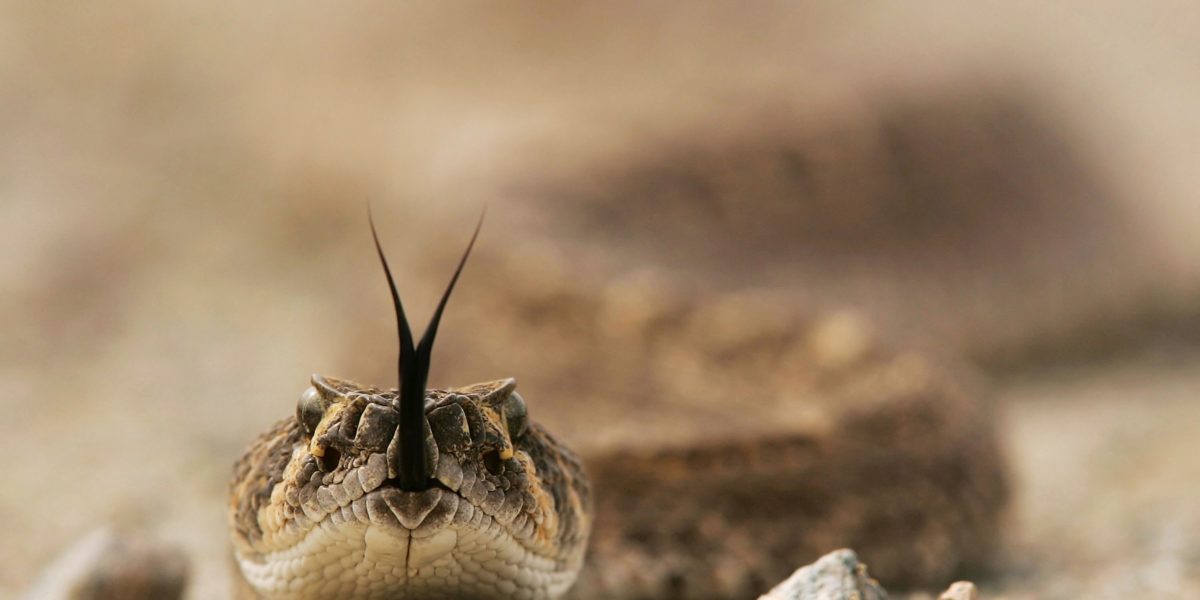
What to Do If You See a Rattlesnake in the Wild
Running across a rattler in the desert can be alarming—use this advice from Look Big, the guide to animal encounters

Rattlesnakes, also known as rattlers, are found in the Southwest; there are thirteen species in Arizona alone.
When outstretched, they’re as long as an NBA player is tall. Their telltale sounds are hisssssss, rattle-rattle. Rattlers have a 10- to 25-year life span, and eat one mouse every two weeks.
Stuff of nightmares: A four-year-old in Texas recently found a rattlesnake in his toilet. Smart boy called for his mom. She killed it. Then Big Country Snake Removal came over—and found twenty-three more.

Illustrations copyright © 2018 by Jeff Östberg
Luckily, most people see rattlesnakes outside, on the trail, under a rock. And most people scream. A fascinating website called Fearof.net ranks fear of snakes, ophiodiophobia, second of all phobias, just behind spiders and above . . . everything else: Heights, public speaking, belly buttons (omphalophobia; it’s a thing). Kids, though, love snakes. And 1,300 kids get bitten every year, about half by rattlers, with copperhead bites on the rise.
Beyond the usual dizziness, fever, and fang marks that are symptoms of a snake bite, Dr. Steve Curry of Banner Poison Control Center in Phoenix, Arizona, has occasionally witnessed people collapsing within minutes after their throat swelled and cut off breathing.
But the good news: According to the Centers for Disease Control and Prevention, of the 7,000 people in the United States bitten by venomous snakes each year, only about 0.2 percent of bites end in death. Still.

